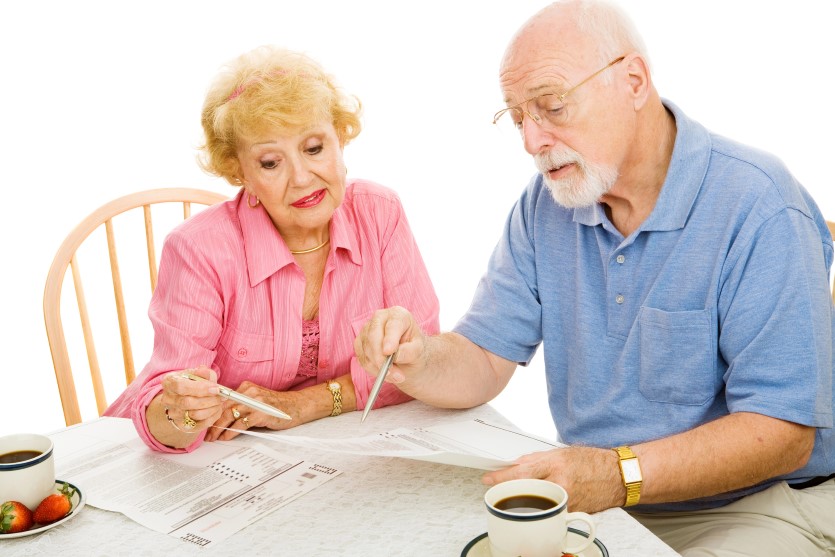Early in my career at Personal Money Manager™, I had the pleasure of signing, as a witness, a client’s ballot. She was determined to vote, as she had her whole adult life, but disability prevented her from voting in person–or signing her absentee ballot with anything other than an “X”. Together, we made sure her ballot was correctly completed and submitted on time, just as with all of my client’s other important paperwork.
One presidential candidate is advising followers not to vote. But I find that my senior clients want to do just the opposite—they want to vote and consider it an important right and privilege.
Confusing deadlines and procedures, which differ from place to place, as well as difficulty getting to the polls, might get in the way of casting a ballot.
Looking Ahead to Voting
So, looking ahead to Election Day, I gathered some (mostly New York) resources to help make voting more accessible for the older adults in your life and on your client list. Note that rules and procedures differ by state, county, even polling place. These are just the highlights—there is too much information to share in one newsletter!
With this in mind, please share this newsletter with others.
Registering to Vote
Voter registration is now open in New York State and can be completed online, in person, or by mail. Your application must be received by October 26.
Early Mail Ballot
In June 2023, New Yorkers won the vote by mail. You must request an early mail ballot prior to each election. Check here to confirm first that you are registered. Ballots will be sent out in October.
Ballots must be postmarked by Election Day. Check here to track your ballot—when it was mailed to you, received back, and counted.
Absentee Ballot
Unlike an Early Mail Ballot, an absentee ballot is for those who can’t vote in person due to being away from home or illness or physical disability or duties related to the primary care of one or more individuals who are ill or physically disabled. Find a New York absentee ballot application here. With a permanent disability, you will be mailed a ballot for all future elections. Snowbirds can write in an alternate address for receiving their ballot in the mail. Nursing homes arrange with the local Election Board to facilitate voting for their residents.
Note that those opting for early mail or absentee ballots cannot decide to vote in person instead. (Best to call your County Board of Elections if a ballot has not gotten to you on time.)
Instead, voters who have already been issued a ballot can still vote in person using an affidavit ballot. The affidavit ballot will be kept until the election is completed and counted only if the voter’s ballot has not been received.
Early In-Person Voting
In New York, in-person early voting begins Saturday, October 26 and continues through November 3, two days before Election Day. Voters may have several choices of early voting sites (I found seven in Rockland County, NY), unlike the single assigned Election Day polling place. Find NY early voting sites here.
Polling Place Accommodations
If you prefer to vote in person, federal law requires your polling place to provide several accommodations for those who need them. You can find the details here. Best to first confirm with your Election Board that the polling place is accessible to you as not every location will fit your particular needs.
Be clear about what you need to make voting easy for you. You may also be able to ask for a ballot in your language or an alternative format (such as large print or audio). If your assigned voting location is not accessible to you, ask your election office about other options. Call here with any Election Day problem.
I remember waiting in a long line for early voting four years ago. Luckily, a poll watcher was monitoring the line. She offered me a folding chair on the sideline, making sure I did not lose my place in line. A place to sit and bottle of water for voters who need them can’t be counted on.
Who and What Else will be on Your Ballot?
In addition to voting for president, New Yorkers will vote for U.S Congress person and New York state senator and other down-ballot candidates.
Don’t forget the flip side of your ballot—where ballot measures are listed. To-date, New Yorker’s ballot will have Proposal One, an anti-discrimination provision to be added to the State Constitution, with additional measures in process. Ballotpedia and League of Women Voters have lookup tools to preview your specific ballot.
Are You Able to do More?
Polling places need poll workers. It’s a long day but a great way to connect with neighbors while earning an hourly wage. Find more information here. Or, volunteer for a campaign. I’m sure they’d be happy to find work for you that matches your interests and abilities.
Why Do You Vote?
Information on how to vote is important, but so is knowing why it’s worth the effort. Older adults in your life might enjoy sharing their early memories of voting, and you may enjoy hearing their stories.
My father shared a childhood memory of a suffragette dressed in a traditional white blouse and long skirt visiting his parents on NYC’s Lower East Side to talk to them about voting and share glasses of tea, Eastern European style.
To start the conversation, you can ask: Do you remember the first time you voted, or went to the polls? In which presidential election did you first cast your ballot? Why do you make the effort to vote? An interesting “Why I Vote” conversation starter can be found here.
See you at the polls!
Top Photo credit: ID6673685 lisafx|depositphoto.com

